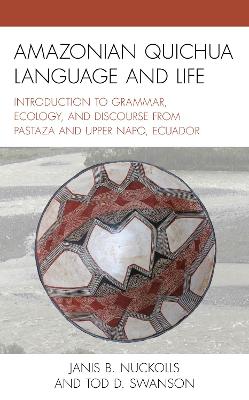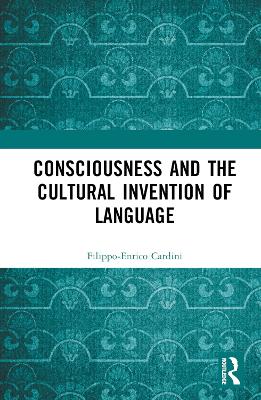Amazonian Quichua Language and Life
 portes grátis
portes grátis
Amazonian Quichua Language and Life
Introduction to Grammar, Ecology, and Discourse from Pastaza and Upper Napo, Ecuador
Swanson, Tod D.; Nuckolls, Janis B.
Lexington Books
11/2022
278
Mole
Inglês
9781793616210
15 a 20 dias
Descrição não disponível.
Contents
Acknowledgments
Introduction
Part 1: Self and Other
Lesson 1: The most basic verbal interactions
Lesson 2: Expressing ideas of being
Lesson 3: Talking about family
Lesson 4: Types of questions
Lesson 5: Affirming, negating and evading
Lesson 6: Articulating the perspectives of self and other
Lesson 7: Human and nonhuman bodies
Lesson 8: Expressing thoughts, feelings, processes, and enumeration
Lesson 9: Suffixes of instrumentality, accompaniment and the imperatives
Lesson 10: Suffixes of Togetherness, Separateness, and Exclusivity
Part 2: Space and Time
Lesson 11: Purpose, directionality, duration, color
Lesson 12: Attribution, location, past tense
Lesson 13: Habituality, complex movement suffixes, delimitation
Lesson 14: The Co-reference suffix -sha
Lesson 15: The Switch-Reference suffix -kpi
Lesson 16: The Present Perfect -shka
Lesson 17: Talking about the future
Lesson 18: Varieties of compound verbs
Lesson 19: Conditionality, ordering and connecting ideas
Lesson 20: Evidentiality, speech reports, Inchoative -ya, and Purposive -chun
Vocabulary
Bibliography
Acknowledgments
Introduction
Part 1: Self and Other
Lesson 1: The most basic verbal interactions
Lesson 2: Expressing ideas of being
Lesson 3: Talking about family
Lesson 4: Types of questions
Lesson 5: Affirming, negating and evading
Lesson 6: Articulating the perspectives of self and other
Lesson 7: Human and nonhuman bodies
Lesson 8: Expressing thoughts, feelings, processes, and enumeration
Lesson 9: Suffixes of instrumentality, accompaniment and the imperatives
Lesson 10: Suffixes of Togetherness, Separateness, and Exclusivity
Part 2: Space and Time
Lesson 11: Purpose, directionality, duration, color
Lesson 12: Attribution, location, past tense
Lesson 13: Habituality, complex movement suffixes, delimitation
Lesson 14: The Co-reference suffix -sha
Lesson 15: The Switch-Reference suffix -kpi
Lesson 16: The Present Perfect -shka
Lesson 17: Talking about the future
Lesson 18: Varieties of compound verbs
Lesson 19: Conditionality, ordering and connecting ideas
Lesson 20: Evidentiality, speech reports, Inchoative -ya, and Purposive -chun
Vocabulary
Bibliography
Este título pertence ao(s) assunto(s) indicados(s). Para ver outros títulos clique no assunto desejado.
Amazonian Ecuador;ethnoaesthetics;language and ecology;Pastaza Quichua;Quechua IIB;Quichua pedagogy;regional linguistics;Runa Shimi;Upper Napo Quichua
Contents
Acknowledgments
Introduction
Part 1: Self and Other
Lesson 1: The most basic verbal interactions
Lesson 2: Expressing ideas of being
Lesson 3: Talking about family
Lesson 4: Types of questions
Lesson 5: Affirming, negating and evading
Lesson 6: Articulating the perspectives of self and other
Lesson 7: Human and nonhuman bodies
Lesson 8: Expressing thoughts, feelings, processes, and enumeration
Lesson 9: Suffixes of instrumentality, accompaniment and the imperatives
Lesson 10: Suffixes of Togetherness, Separateness, and Exclusivity
Part 2: Space and Time
Lesson 11: Purpose, directionality, duration, color
Lesson 12: Attribution, location, past tense
Lesson 13: Habituality, complex movement suffixes, delimitation
Lesson 14: The Co-reference suffix -sha
Lesson 15: The Switch-Reference suffix -kpi
Lesson 16: The Present Perfect -shka
Lesson 17: Talking about the future
Lesson 18: Varieties of compound verbs
Lesson 19: Conditionality, ordering and connecting ideas
Lesson 20: Evidentiality, speech reports, Inchoative -ya, and Purposive -chun
Vocabulary
Bibliography
Acknowledgments
Introduction
Part 1: Self and Other
Lesson 1: The most basic verbal interactions
Lesson 2: Expressing ideas of being
Lesson 3: Talking about family
Lesson 4: Types of questions
Lesson 5: Affirming, negating and evading
Lesson 6: Articulating the perspectives of self and other
Lesson 7: Human and nonhuman bodies
Lesson 8: Expressing thoughts, feelings, processes, and enumeration
Lesson 9: Suffixes of instrumentality, accompaniment and the imperatives
Lesson 10: Suffixes of Togetherness, Separateness, and Exclusivity
Part 2: Space and Time
Lesson 11: Purpose, directionality, duration, color
Lesson 12: Attribution, location, past tense
Lesson 13: Habituality, complex movement suffixes, delimitation
Lesson 14: The Co-reference suffix -sha
Lesson 15: The Switch-Reference suffix -kpi
Lesson 16: The Present Perfect -shka
Lesson 17: Talking about the future
Lesson 18: Varieties of compound verbs
Lesson 19: Conditionality, ordering and connecting ideas
Lesson 20: Evidentiality, speech reports, Inchoative -ya, and Purposive -chun
Vocabulary
Bibliography
Este título pertence ao(s) assunto(s) indicados(s). Para ver outros títulos clique no assunto desejado.







